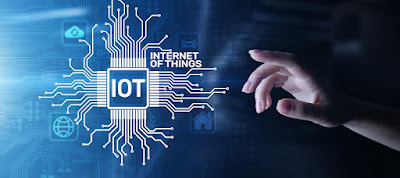Internet of Things (IoT)
The Power of Connection:
Understanding the Internet of Things (IoT)
The Internet of Things, or IoT, is a
revolutionary concept that has transformed the way we interact with the world
around us. This technology has woven a web of connectivity that spans across
devices, systems, and even entire cities. In this article, we will dive deep
into the realm of IoT, exploring its origins, applications, benefits, and
potential challenges.
1. What is IoT? Unveiling the
Basics
At its core, the Internet of Things refers
to the interconnection of various physical objects through the use of embedded
sensors, software, and other technologies. These objects, which can range from
everyday appliances to industrial machinery, become "smart" as they
gather and exchange data over the internet. This connectivity enables them to
communicate, analyze information, and even make informed decisions.
2. The Genesis of IoT: How It
All Began
The roots of IoT can be traced back to the
early 1980s when a group of Carnegie Mellon University students connected a
vending machine to the internet. However, it wasn't until the 2000s that the
term "Internet of Things" gained prominence. Kevin Ashton, a British
technology pioneer, coined the term to describe a system where objects could
communicate and share information without human intervention.
3. Real-world Applications
That Define IoT's Potential
IoT's reach extends far beyond mere
convenience. It has found its way into various industries, shaping the future
of healthcare, agriculture, transportation, and more.
3.1 Healthcare Revolution
Medical devices connected to the internet
have revolutionized patient care. From wearable fitness trackers that monitor
vital signs to implanted devices that transmit data to healthcare providers,
IoT has improved diagnosis accuracy and patient outcomes.
3.2 Smart Cities for a Bright
Future
Entire cities are becoming "smart"
by integrating IoT technology into urban infrastructure. Smart traffic lights,
waste management systems, and energy-efficient buildings are just a few
examples of how IoT is enhancing urban living and sustainability.
4. The Perks: Advantages of
IoT Adoption
The adoption of IoT brings forth an array of
advantages that transform industries and daily life alike.
4.1 Enhanced Efficiency and
Productivity
By enabling real-time data analysis, IoT
allows businesses to streamline processes and optimize operations. This
translates to improved efficiency, reduced downtime, and ultimately increased
productivity.
4.2 Data-Driven Decision
Making
IoT generates copious amounts of data,
offering valuable insights that inform decision-making. Businesses can make
informed choices based on accurate, up-to-the-minute information.
5. Challenges on the IoT
Horizon
While the potential of IoT is undeniable, there
are challenges that need addressing.
5.1 Security Concerns
The more devices connected, the higher the
risk of cyberattacks. Ensuring the security of IoT systems and the data they
handle is a paramount concern.
5.2 Privacy Considerations
As IoT devices collect vast amounts of
personal data, safeguarding user privacy becomes a significant challenge.
Striking the balance between convenience and data protection is crucial.
6. The Future Unveiled: IoT's
Next Chapter
The future of IoT holds boundless possibilities.
From the expansion of 5G networks to the emergence of edge computing,
advancements will further enhance IoT's capabilities.
7. Conclusion
In a world increasingly driven by
connectivity, the Internet of Things stands as a testament to human innovation.
Its transformative power has the potential to reshape industries, redefine
urban living, and bring about a new era of convenience. However, careful
navigation of security and privacy concerns is essential as we venture deeper
into this interconnected landscape.
8. FAQs About IoT
Q1: What exactly is the
Internet of Things?
The Internet of Things refers to the network
of interconnected devices and objects that can communicate and exchange data
over the internet.
Q2: How is IoT used in
healthcare?
IoT is used in healthcare for various
applications, including remote patient monitoring, medical device connectivity,
and data-driven treatment decisions.
Q3: What are the security
challenges associated with IoT?
IoT faces security challenges like data
breaches and cyberattacks due to the vast number of interconnected devices and
potential vulnerabilities.
Q4: Can IoT improve urban
sustainability?
Yes, IoT can enhance urban sustainability by
enabling smart city technologies such as efficient energy usage and optimized
waste management.
Q5: What does the future hold
for IoT?
The future of IoT holds exciting advancements, including faster connectivity through 5G networks and more decentralized data processing through edge computing.




Post a Comment
0Comments